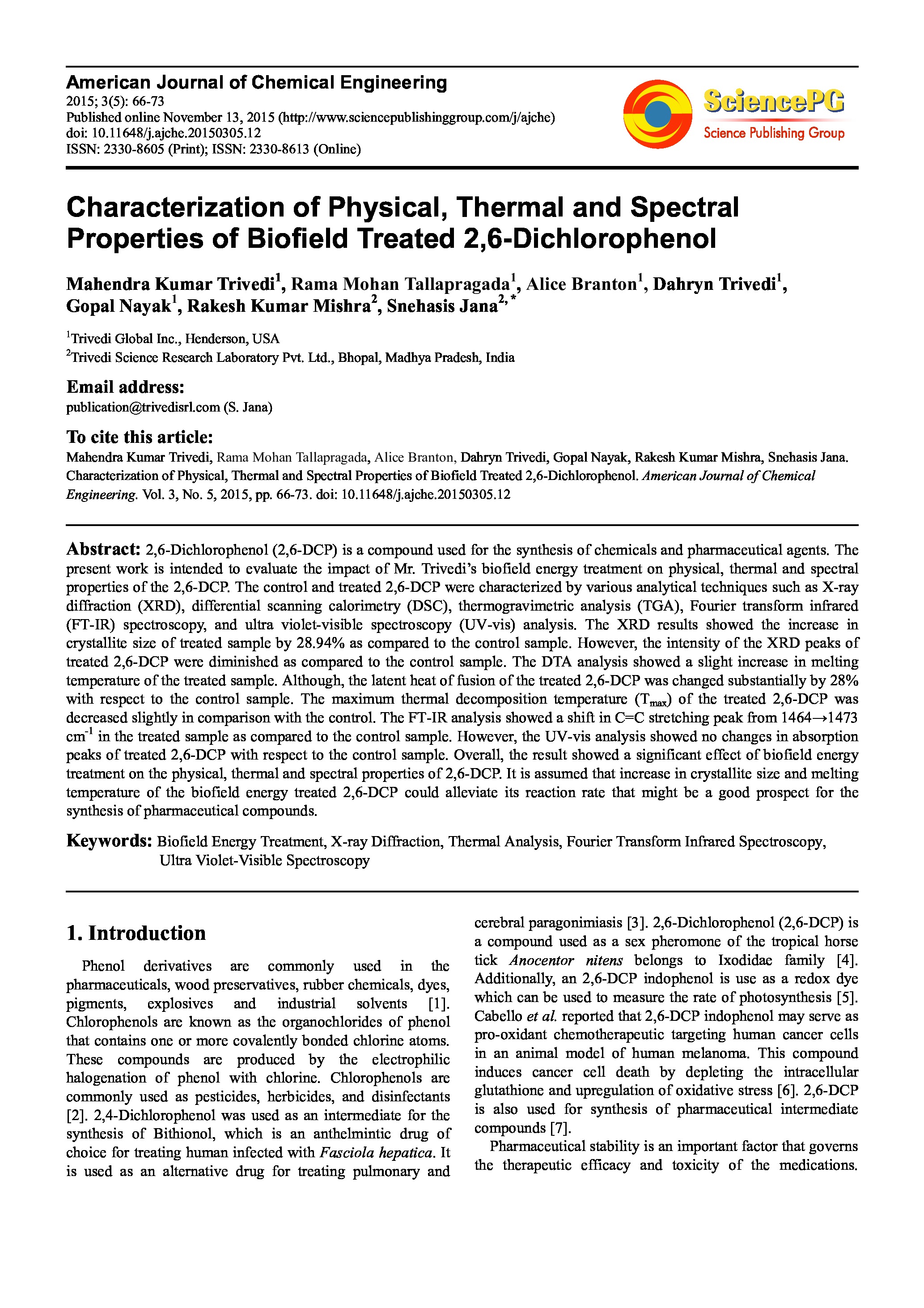Characterization of Physical, Thermal and Spectral Properties of Biofield Treated 2,6-Dichlorophenol
Affiliation
Trivedi Global Inc.; Trivedi Science Research Laboratory Pvt. Ltd.
Main category
Natural Sciences (Analytical Chemistry, Method Development (Chemistr)
Abstract
2,6-Dichlorophenol (2,6-DCP) is a compound used for the synthesis of chemicals and pharmaceutical agents. The present work is intended to evaluate the impact of Mr. Trivedi’s biofield energy treatment on physical, thermal and spectral properties of the 2,6-DCP. The control and treated 2,6-DCP were characterized by various analytical techniques such as X-ray diffraction (XRD), differential scanning calorimetry (DSC), thermogravimetric analysis (TGA), Fourier transform infrared (FT-IR) spectroscopy, and ultra violet-visible spectroscopy (UV-vis) analysis. The XRD results showed the increase in crystallite size of treated sample by 28.94% as compared to the control sample. However, the intensity of the XRD peaks of treated 2,6-DCP were diminished as compared to the control sample. The DTA analysis showed a slight increase in melting temperature of the treated sample. Although, the latent heat of fusion of the treated 2,6-DCP was changed substantially by 28% with respect to the control sample. The maximum thermal decomposition temperature (Tmax) of the treated 2,6-DCP was decreased slightly in comparison with the control. The FT-IR analysis showed a shift in C=C stretching peak from 1464→1473 cm-1 in the treated sample as compared to the control sample. However, the UV-vis analysis showed no changes in absorption peaks of treated 2,6-DCP with respect to the control sample. Overall, the result showed a significant effect of biofield energy treatment on the physical, thermal and spectral properties of 2,6-DCP. It is assumed that increase in crystallite size and melting temperature of the biofield energy treated 2,6-DCP could alleviate its reaction rate that might be a good prospect for the synthesis of pharmaceutical compounds.
DOI
10.18147/smn.2017/paper:429
Do you have problems viewing the pdf-file? Download paper
here
If the paper contains inappropriate content, please
report the paper. You will be redirected to the landing page.
